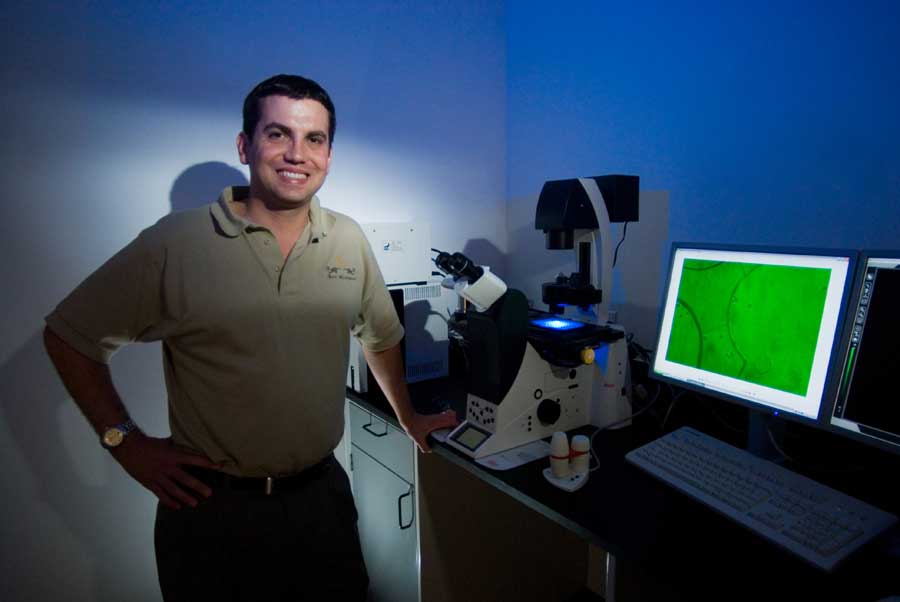Biomedical engineers use electric pulses to destroy cancer cells

A team of biomedical engineers at Virginia Tech and the University of California at Berkeley has developed a new minimally invasive method of treating cancer, and they anticipate clinical trials on individuals with prostate cancer will begin soon.
The process, called irreversible electroporation (IRE), was invented by two engineers, Rafael V. Davalos, a faculty member of the Virginia Tech–Wake Forest University School of Biomedical Engineering and Sciences and Boris Rubinsky, a bioengineering professor at the University of California, Berkeley.
Electroporation is a phenomenon known for decades that increases the permeability of a cell from none to a reversible opening to an irreversible opening. With the latter, the cell will die. What Davalos and Rubinsky did was apply this irreversible concept to the targeting of cancer cells.
“IRE removes tumors by irreversibly opening tumor cells through a series of short intense electric pulses from small electrodes placed in or around the body,” Davalos, the 2006 recipient of the Hispanic Engineer National Achievement Award for Most Promising Engineer or Scientist, said. “This application creates permanent openings in the pores in the cells of the undesirable tissue. The openings eventually lead to the death of the cells without the use of potentially harmful chemotherapeutic drugs.”
The researchers successfully ablated tissue using the IRE pulses in the livers of male Sprague-Dawley rats.
“We did not use any drugs, the cells were destroyed, and the vessel architecture was preserved,” Davalos said.
This work was completed with three additional colleagues, Lluis Mir, director of the Laboratory of Vectorology and Gene Transfer Research of the Institut Gustave Roussy, the leading cancer research center in Europe, and of the Centre National de la Recherche Scientifique (CNRS), Liana Horowitz, a visiting scientist at the University of California, Berkeley, and Jon F. Edd, a doctoral candidate at Berkeley. They reported these in vivo experiments in the June 2006 IEEE Transactions on Biomedical Engineering.
Oncologists already use a variety of methods to destroy tumors using heat or freezing processes, but these current techniques can damage healthy tissue or leave malignant cells. The difference with IRE is Davalos and Rubinsky were able to adjust the electrical current and reliably kill the targeted cells. “The reliable killing of a targeted area with cellular scale resolution without affecting surrounding tissue or nearby blood vessels is key,” Davalos says.
Now, an article by Davalos on IRE is being featured in a special issue of Technology in Cancer Research and Treatment dedicated to this new field. Rubinsky, who holds his Ph.D. from the Massachusetts Institute of Technology, is the guest editor for this special issue, to be published in August, 2007.
At Virginia Tech, Davalos directs the interdisciplinary Bioelectromechanical Systems Laboratory, part of the university’s Institute for Critical Technology and Applied Science (ICTAS) of which the school of biomedical engineering and sciences is a core member. In the Bioelectromechanical Systems Laboratory, other research projects associated with utilizing the physical and electrical characteristics of cells, such as engineering methods for microfluidic single cell analysis, selective cell concentration and image-guided surgery, broaden the understanding and potential of the field of IRE.
“IRE shows remarkable promise as a “minimally invasive, inexpensive surgical technique to treat cancer. It has the advantages that it is easy to apply, is not affected by local blood flow, and can be monitored and controlled using electrical impedance tomography,” Davalos explained. Davalos and other researchers will continue to advance this promising method to treat cancer.




